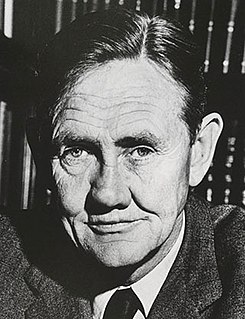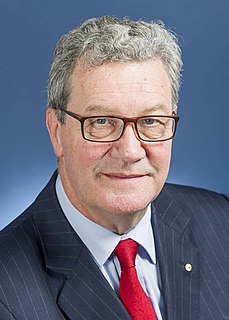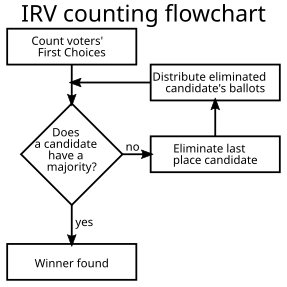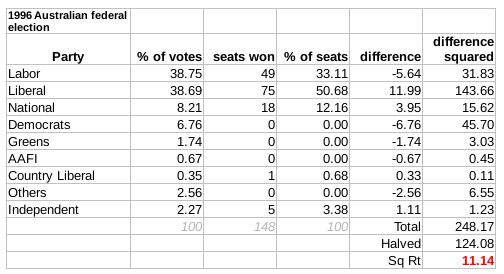
Federal elections were held in Australia on 10 November 2001. All 150 seats in the House of Representatives and 40 seats in the 76-member Senate were up for election. The incumbent Liberal Party of Australia led by Prime Minister of Australia John Howard and coalition partner the National Party of Australia led by John Anderson defeated the opposition Australian Labor Party led by Kim Beazley.

The 1998 Australian federal election was held to determine the members of the 39th Parliament of Australia. It was held on 3 October 1998. All 148 seats of the House of Representatives and 40 seats of the 76-seat Senate were up for election. The incumbent centre-right Liberal/National Coalition government led by Prime Minister John Howard of the Liberal Party and coalition partner Tim Fischer of the National Party defeated the centre-left Australian Labor Party opposition led by Opposition Leader Kim Beazley.

Federal elections were held in Australia on 9 October 2004. All 150 seats in the House of Representatives and 40 seats in the 76-member Senate were up for election. The incumbent Liberal Party of Australia led by Prime Minister of Australia John Howard and coalition partner the National Party of Australia led by John Anderson defeated the opposition Australian Labor Party led by Mark Latham.

Annette Louise Ellis, Australian politician, was a Labor Party member of the Australian House of Representatives from March 1996 to August 2010, representing the Division of Namadgi 1996–98 and the Division of Canberra (ACT) from 1998 to 2010.

The 1993 Australian federal election was held to determine the members of the 37th Parliament of Australia. It was held on 13 March 1993. All 147 seats of the House of Representatives and 40 seats of the 76-seat Senate were up for election. The incumbent centre-left Australian Labor Party government led by Prime Minister Paul Keating was re-elected to a fifth term, defeating the centre-right Liberal/National Coalition led by Opposition Leader John Hewson of the Liberal Party, and coalition partner Tim Fischer of the National Party.

Federal elections were held in Australia on 24 November 2007. All 150 seats in the House of Representatives and 40 of the seats in the 76-member Senate were up for election. The election featured a 39-day campaign, with 13.6 million Australians enrolled to vote.

The Division of Bennelong is an Australian electoral division in the state of New South Wales. The division was created in 1949 and is named after Bennelong, an Aboriginal man befriended by the first Governor of New South Wales, Arthur Phillip.

The state election for the 51st Parliament of South Australia was held in the Australian state of South Australia on 18 March 2006, and was conducted by the independent State Electoral Office.

Australian Greens SA is a green political party located in the Australian state of South Australia. It is a member of the federation of the Australian Greens party.

Federal elections were held in Australia on 24 March 1990. All 148 seats in the House of Representatives and 40 seats in the 76-member Senate were up for election. The incumbent Australian Labor Party led by Bob Hawke defeated the opposition Liberal Party of Australia led by Andrew Peacock with coalition partner the National Party of Australia led by Charles Blunt. The election saw the reelection of a Hawke government, the fourth successive term.

Federal elections were held in Australia on 11 July 1987, following the granting of a double dissolution on 5 June by the Governor-General Sir Ninian Stephen. Consequently, all 148 seats in the House of Representatives as well as all 76 seats in the Senate were up for election. The incumbent Australian Labor Party, led by Prime Minister Bob Hawke, defeated the opposition Liberal Party of Australia, led by John Howard and the National Party of Australia led by Ian Sinclair.
State elections were held in South Australia on 11 December 1993. All 47 seats in the South Australian House of Assembly were up for election. The incumbent Australian Labor Party led by Premier of South Australia Lynn Arnold was defeated by the Liberal Party of Australia led by Leader of the Opposition Dean Brown. The Liberals won what is still the largest majority government in South Australian history.

Federal elections were held in Australia on 18 October 1980. All 125 seats in the House of Representatives and 34 of the 64 seats in the Senate were up for election. The incumbent Liberal–NCP coalition government, led by Prime Minister Malcolm Fraser, was elected to a third term, defeating the opposition Labor Party led by Bill Hayden.

Federal elections were held in Australia on 25 October 1969. All 125 seats in the House of Representatives were up for election. The incumbent Liberal–Country coalition government, led by Prime Minister John Gorton, won the election with a severely diminished majority over the opposition Labor Party, led by Gough Whitlam. Both major parties had changed their leaders in the run-up to the election, the first time this had occurred since 1946.

The 2010 Victorian state election, held on Saturday, 27 November 2010, was for the 57th Parliament of Victoria. The election was to elect all 88 members of the Legislative Assembly and all 40 members of the Legislative Council. The incumbent centre-left Labor Party government, led by John Brumby, was defeated by the centre-right Liberal/National Coalition opposition, led by Ted Baillieu. The election gave the Coalition a one-seat majority in both houses of parliament.

A federal election was held on Saturday, 21 August 2010 for members of the 43rd Parliament of Australia. The incumbent centre-left Australian Labor Party led by Prime Minister Julia Gillard won a second term against the opposition centre-right Liberal Party of Australia led by Opposition Leader Tony Abbott and Coalition partner the National Party of Australia, led by Warren Truss, after Labor formed a minority government with the support of three independent MPs and one Australian Greens MP.

Elections to the 55th Parliament of New South Wales were held on Saturday, 26 March 2011. The 16-year-incumbent Labor Party government led by Premier Kristina Keneally was defeated in a landslide by the Liberal–National Coalition opposition led by Barry O'Farrell. Labor suffered a two-party swing of 16.4 points, the largest against a sitting government at any level in Australia since World War II. From 48 seats at dissolution, Labor was knocked down to 20 seats—the worst defeat of a sitting government in New South Wales history, and one of the worst of a state government in Australia since federation. The Coalition picked up a 34-seat swing to win a strong majority, with 69 seats–the largest majority government, in terms of percentage of seats controlled, in NSW history. It is only the third time since 1941 that a NSW Labor government has been defeated.
The Mundingburra state by-election, 1996 was a by-election held on 3 February 1996 for the Queensland Legislative Assembly seat of Mundingburra, located in the southern suburbs of Townsville. It was brought on by the Court of Disputed Returns declaring void the close result of the July 1995 election in the normally safe Labor seat, and resulted in the end of the Goss Ministry headed by Labor Premier Wayne Goss, and the swearing in of a minority government led by Nationals leader Rob Borbidge.

A by-election for the Australian House of Representatives seat of North Sydney was held on 5 December 2015 from 8 am to 6 pm AEDT.




























